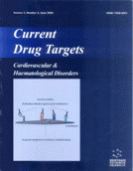Abstract
Several intervention studies have shown that some hypolipidemic and hypotensive drugs such as fibrates,3-hydroxy-3-methylglutaryl-coenzyme A (HMG-CoA)reductase inhibitors,angiotensin converting enzyme (ACE)inhibitors and calcium (Ca)-antagonists prevent atherosclerosis.The main pathological findings in atherosclerosis include abnormal reactions of neutrophils,lymphocytes and monocytes / macrophages,vascular smooth muscle cells and vascular endothelial cells,and the accumulation of cholesterol ester in the arterial wall.Therefore,investigating the effects of these drugs on the arterial wall may improve understanding of the mechanisms underlying atherosclerosis.Here,based on recent studies including our own, we describe the relationships between risk factors for atherosclerosis,especially hyperlipidemia and hypertension,and the molecular mechanisms that govern lipid metabolism in the arteries.
Keywords: vascular endothelial cells, ppar, cu, zn superoxide dismutase (cu,zn-sod), nadph oxidase, sterol response element-binding protein-1 (srebp-1), angiotensin II (ang II), ca channels
 19
19













